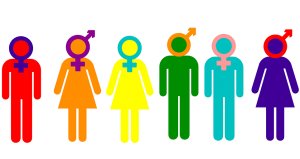Women in pain: Overcoming gender bias in care
 by Nancy Gahles, DC, CCH, RSHom(NA), OIM
by Nancy Gahles, DC, CCH, RSHom(NA), OIM
There seems to be a negative attitude towards female chronic pain patients. “I have seen many doctors...for my back pain and migraines and find that many of those doctors treat women as simple or stupid and direct questions or directions to male partners or friends,” wrote one woman in response to an online survey conducted by the non-profit National Pain Report and For Grace.
According to the survey, over 90 percent of women with chronic pain feel the healthcare system discriminates against female patients. In addition, 84 percent feel they have been treated differently by doctors because of their gender, and 65 percent feel doctors take them less seriously because they are females.
Chronic pain conditions in women, more often than not, are multifactorial in expression. The National Pain Report added a comment to the survey, stating, “In addition to fibromyalgia and problems with both hips and lower back, I have severe Sjogren’s syndrome. Additionally, I have been diagnosed with a very rare optic neuropathy.”
“Central pain syndrome from nerve damage, occipital neuralgia, brachial neuralgia. Broken heart from loss of loved career and inability to help with adopted grandson with disabilities,” reads like a page from the playbook of my 37 year career as a chiropractor.
Pain that becomes chronic, that is, lasts for more than 12 weeks, gradually entrains the nervous system and destabilizes the entire network system. While we, as humans, are adaptive network systems, as Iris Bell, MD pointed out in her research, there is a point at which adaptation fails. This is the chronic pain dilemma that confronts and confounds practitioners.
To tease out the components of each person’s state of pain is generally beyond the scope of a single practitioner. Integrative practitioners have some advantage in that they are either educated in one or more of the alternative disciplines that have a complementary effect with their own or they are knowledgeable enough to join a team effort. In my integrative practice, I would address the central pain syndrome from nerve damage, occipital and brachial neuralgias from a chiropractic perspective. I would address the broken heart and loss syndrome from a homeopathic perspective and the feelings associated with being unable to help with her grandson with a team approach inclusive of Cognitive Behavioral Therapy (CBT) and positive emotion psychology, Mindfulness Based Stress Reduction(MBSR) and QiGong, among others. It has been my experience that patient focused therapeutic intervention, one that involves the person as a partner in their own care, is the most effective.
Narrative medicine, listening with an open heart and mind to the story of the person suffering, will go a long way to encourage trust and compliance and to eliminate the feeling of gender bias.
Beth Darnell, PhD, a pain psychologist, notes in the National Pain Report, the complexity of conditions that are interwoven in body, mind, and spirit, such as fibromyalgia. The most common condition (60 percent) reported in the survey was fibromyalgia, wherein women said they had multiple chronic pain conditions, making diagnosis and treatment more difficult. Of the 58 percent of those reporting fibromyalgia, 60 percent of women said they were currently using a narcotic painkiller. “Not only is that number high, but opioids don’t help fibromyalgia," said Darnell. "In fact, there’s research to show that it actually makes it worse.”
One of several compelling research studies by Bell offers consideration of individualized homeopathic remedies in the treatment of fibromyalgia. The individualization of treatment goes back to the narrative, the patient’s story. And it speaks to eliminating bias.
First do no harm. Consider all options that may fit the case of the person presenting to you, male or female. Women consult doctors more frequently than men for pain conditions. They are more likely to tell you all of their symptoms, which can cause eye rolling and exasperation on the part of the doctor who has seven minutes to meet the patient, examine the patient, and render a diagnosis that fits a compensable ICD-10 code within his or her specialty. It is easy to see why women in pain can feel marginalized or discriminated against. There is no strategy in our current healthcare system for individualized treatment of people suffering with chronic pain.
Women’s experience of pain counts. Perhaps it is the sensitivity of women that offers the dual-edged sword of being sensitive to pain and becoming centrally sensitized to pain that brings them to the doctor’s office for help. Chronic pain is felt systemically, it interferes with every area of life and it is stigmatized, especially to women.
Steve Passik, PhD, a psychologist and VP of Research and Advocacy for Millenium Health, responded to the survey. “I think the experiences of women in pain need to come out in the open and really need to be publicized," he said. "This is a wake-up call for people who take care of women in pain."




















SHARE